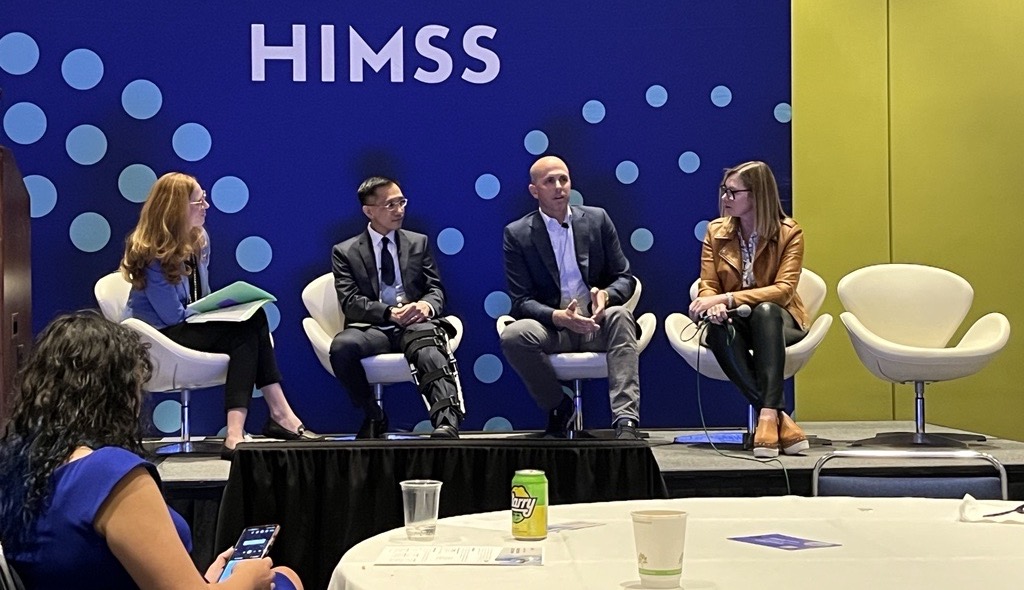
CHICAGO – Creating a seamless experience is key when it comes to improving patients’ interactions with the healthcare system, said Andrea Marks, vice president of digital transformation at Walmart Health and Wellness.
It’s great to solve one step in the process – like scheduling an appointment – but patients are frustrated when they need to move from app to app to access all their care needs.
“A digital experience that is integrated, interconnected, where people don’t have to jump around. You can learn more from them, they’re more engaged, and they just feel like you know them. And you’re not kind of passing them from one group to the next,” Marks said at HIMSS23 here.
But each patient is different, and they all have distinct needs. That means personalization is also important, said Edward Lee, executive vice president and information technology and chief information officer at The Permanente Federation.
“I’m not doing the patient any favors by prescribing the medication and just leaving without explaining to them how we can actually work together to get their diabetes or blood pressure or whatever taken care of,” he said. “So it’s really a very challenging part, thinking about the diversity of patients that we have. And then to do that on a system level I think is one of the biggest challenges.”
Josh Wymer, chief clinical officer at Shifthrive, argued healthcare organizations should look inward when it comes to patient experience concerns.
“I would say every organization possesses the answers to your problems within a team you already have. That’s not very exotic … but I firmly believe, every time I go into a situation, I have found the most creative and relevant answers, typically from the team that’s executing the work. It’s just they have not been listened to,” he said.
But with a looming physician shortage and provider burnout, many healthcare organizations need to do more with less. Marks said healthcare workers need to be working at the top of their licenses, and patients should be able to take control of their care when they can.
“They want to be able to get online, they want to schedule, they want to search doctors, they want to see their information, they want to learn online. They don’t have the time just as much as we don’t have the time. So let’s make it easy for them and focus around that automation and then on the experience,” she said.
The focus is on the patient experience, but the whole healthcare system needs to be considered, Lee said. And organizations can’t stop at the “digital front door” – they need to think about the entire house.
“We can’t build digital solutions in a vacuum,” he said. “We have to have direct coordination with our physicians and our physician operational leaders so that we meet the goal of meeting patients where they are.”
Mark Zandi will offer more detail in the HIMSS23 session “Keynote: Are More Turbulent Times Ahead for Healthcare? An Economic Outlook (Part One).” It is scheduled for Friday, April 21, at 8:30 a.m. – 10:15 a.m. CT at the West Building, Level 3, Skyline Ballroom, room W375.

